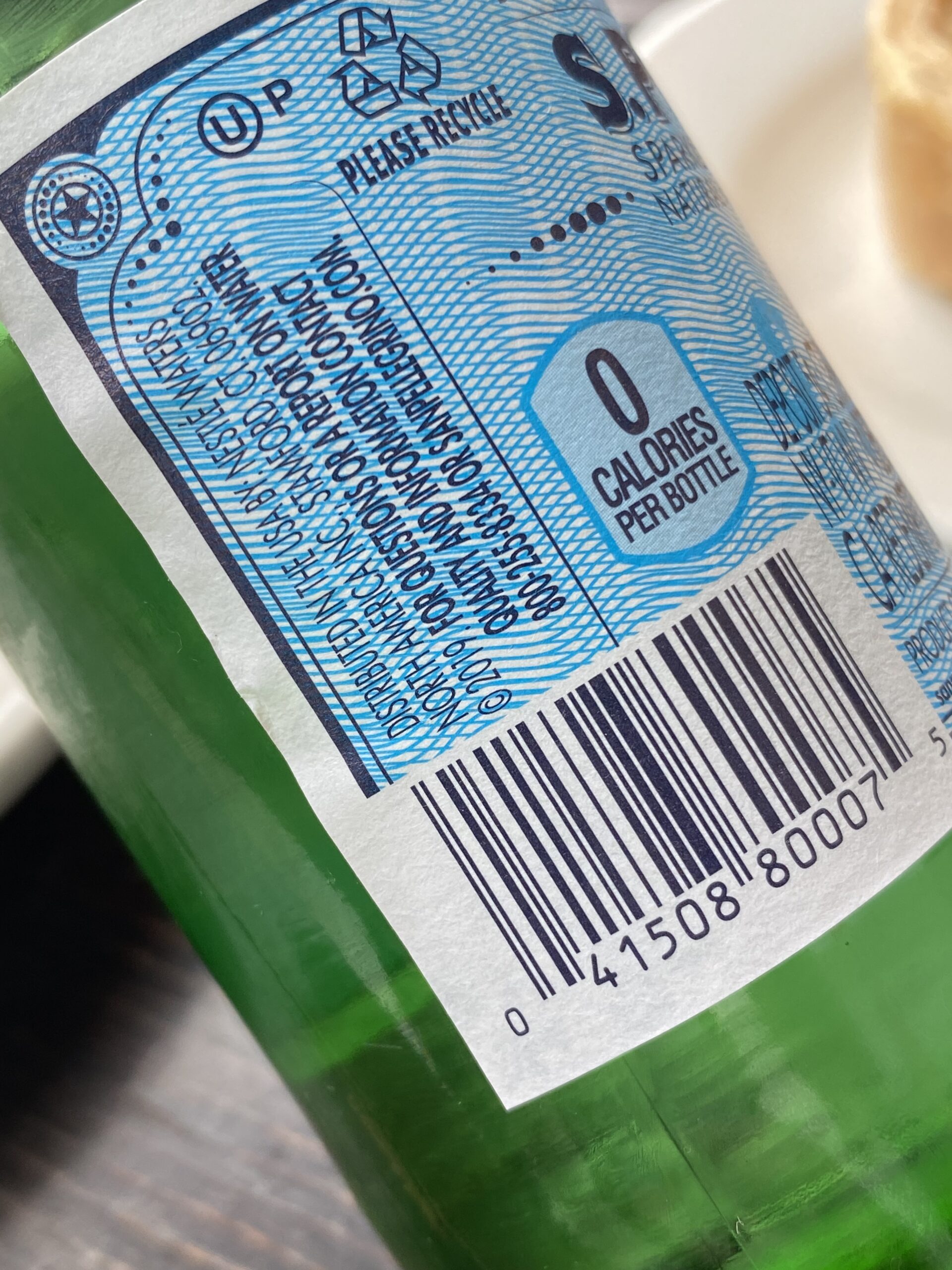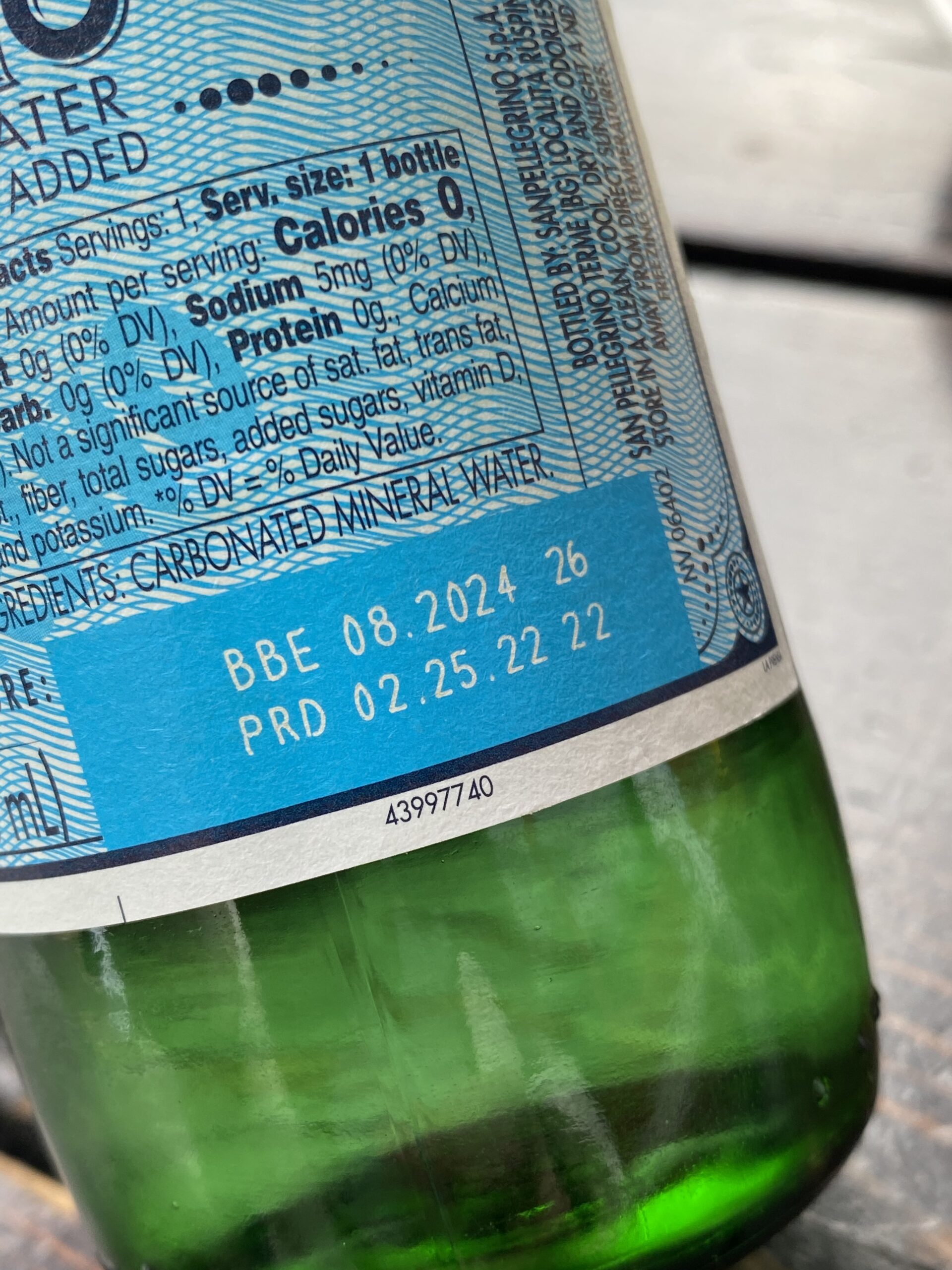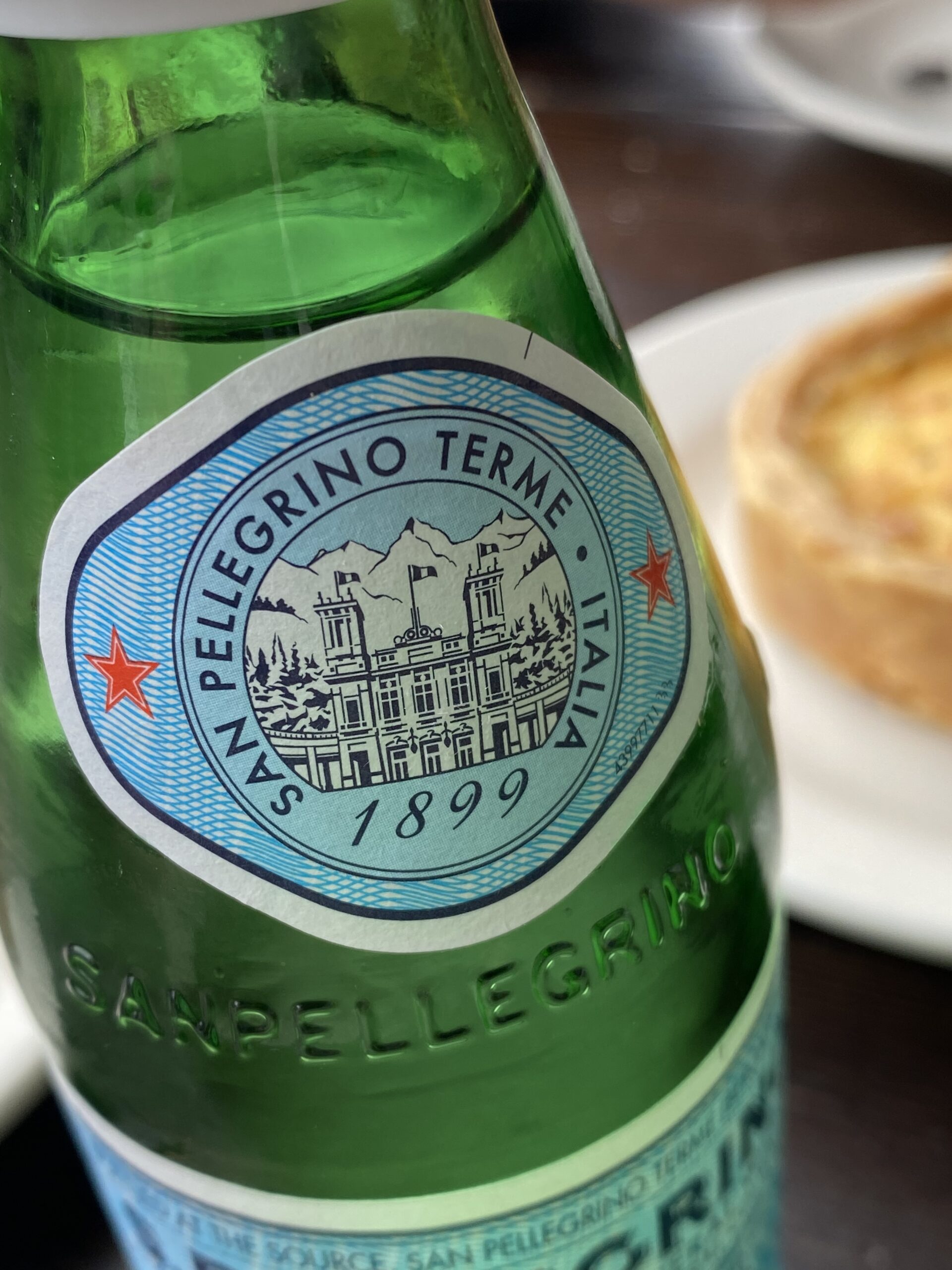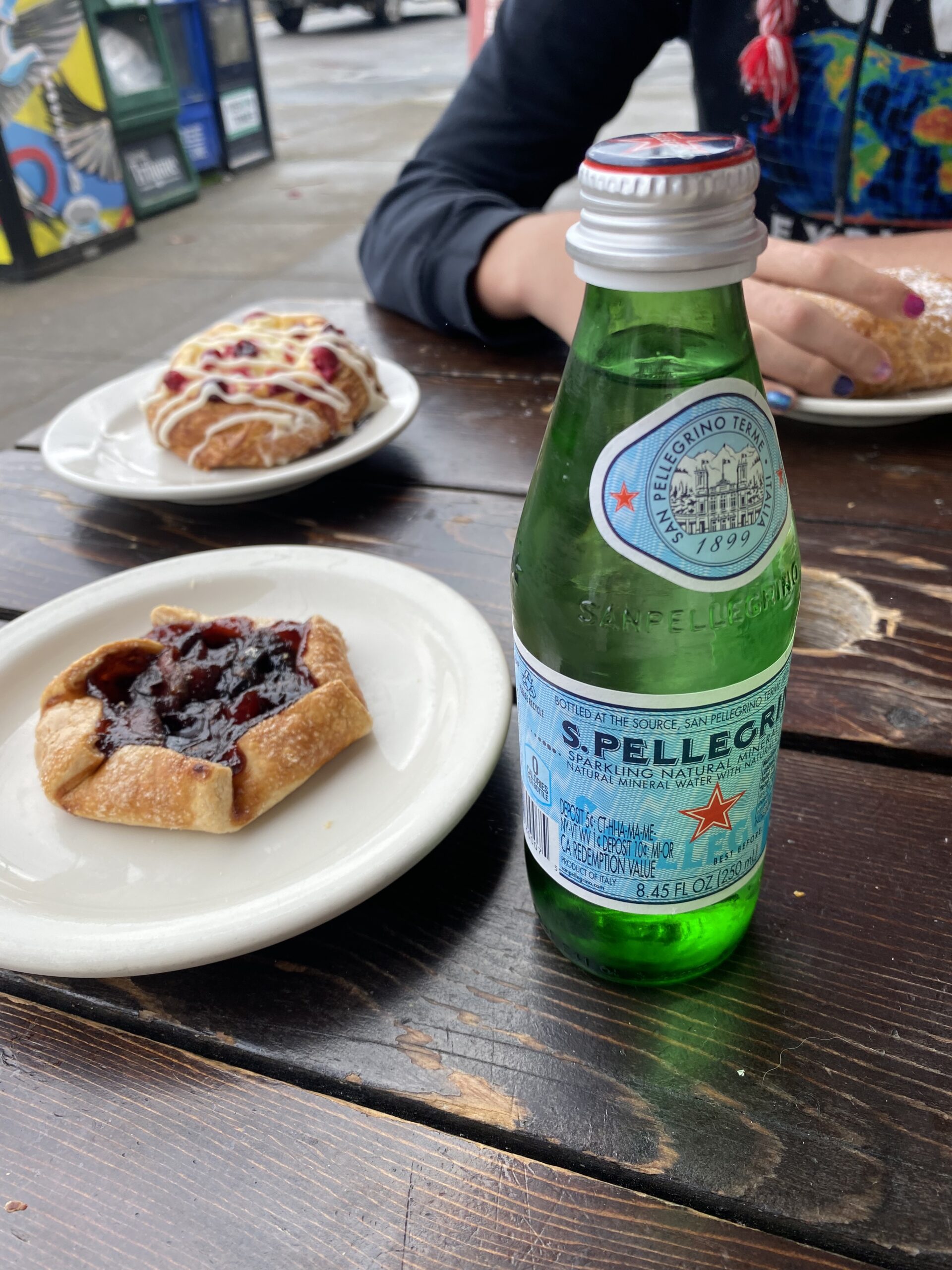Because you asked: XRF test results for a 2022 green glass San Pellegrino bottle
December 18, 2022 — Sunday
In response to the original Lead Safe Mama article (link) about XRF test results for a green glass San Pellegrino bottle (originally published in April of 2017), Lead Safe Mama readers have asked me to test a more recent bottle from this brand. I purchased one of these bottles at a local store today (Sunday 12/18/22). Below are the full test results for the bottle pictured. To read about the implications of this testing, please refer to the full and detailed discussion of the concern in the original article. Thank you.
XRF test results for the bottle pictured
60-second test
Tested multiple times to confirm the results
Metals highlighted in red are generally considered to be toxic heavy metals
- Lead (Pb): 146 +/- 16 ppm
- Cadmium (Cd): 20 +/- 6 ppm
- Tin (Sn): 39 +/- 9 ppm
- Mercury (Hg): non-detect
- Selenium (Se): non-detect
- Barium (Ba): non-detect
- Chromium (Cr): 1,776 +/- 355 ppm
- Antimony (Sb): 21 +/- 12 ppm
- Copper (Cu): 76 +/- 29 ppm
- Zinc (Zn): 113 +/- 20 ppm
- Zirconium (Zr): 225 +/- 11 ppm
- Niobium (Nb): 521 +/- 22 ppm
- Indium (In): 26 +/- 8 ppm
- Iron (Fe): 6,242 +/- 298 ppm
- Platinum (Pt): 68 +/- 37 ppm
- No other metals were detected in consumer goods mode.
For context, below are the test results for the bottle reported in April 2017.
The testing we do (and report) today is more comprehensive than the test results reported in 2018.
- Lead (Pb): 116 ppm
- Mercury (Hg): non-detect
- Cadmium (Cd): non-detect
For those new to this website:
Tamara Rubin is a multiple-federal-award-winning independent advocate for childhood Lead poisoning prevention and consumer goods safety, and a documentary filmmaker. She is also a mother of Lead-poisoned children (two of her sons were acutely Lead-poisoned in 2005). Since 2009, Tamara has been using XRF technology (a scientific method used by the U.S. Consumer Product Safety Commission) to test consumer goods for toxicants (specifically heavy metals — including Lead, Cadmium, Mercury, Antimony, and Arsenic). Tamara’s work was featured in Consumer Reports Magazine in February 2023 (March 2023 print edition).

Never Miss an Important Article Again!
Join our Email List













And I wonder about the possibility of ingesting trace aluminum from the lids. I still have elevated aluminum almost a decade after discontinuing aluminum containing deodorants (not just present in anti-perspirants–the natural rock deodorants contain aluminum, too). Would you consider testing the lip of a newly opened bottle alongside one that has been washed and dried?
Hmm – yeah – I meant to test the lid too but didn’t have time, I will see if I can fit that in this week.
T
I remember a doctor on Youtube saying there was aluminum in the food colorings called Red Lake, Yellow Lake, etc and those are in common things like cake frosting, some chocolate bars, pop tarts and many other items sold in the US. Other countries don’t use it.
hey did you test the lead level in the water?
thanks!
Your writings and findings are very interesting and helpful about something ive never considered would affect people. thank you
I would like to see the results for Boylan Ginger Ale…they have green bottles.
My husband and I ages 67 and 73, have tested high in heavy metals, especially lead. We cannot figure out where it’s coming from… We do drink Pellegrino water, red wine and balsamic vinegar every day, which we will be cutting out or at least coming down. Any other options for sparkling water that is lead safe?
I definitely would stop all balsamic vinegar for starters. Look for water in clear glass (it is less likely to be contaminated – depending on the shelf life.) Have you checked out my food overview post… Here’s the button menu for the site which may be helpful:
https://tamararubin.com/instagram-menu/
T
what’s wrong with traditional balsamic vinegar if it’s stored in clear glass bottles?
It is generally high in lead from several different sources in the production process.
At your age you could have amassed lead from many sources especially from childhood living in houses with lead paint. Men used to wash their hands with leaded gasoline after working with paints and car parts to wash it off. Also a little talked about source especially in rural areas is well water because many areas have lead naturally occurring in their soil so of course the water is full of lead. Lead in water will take sweet. Cadmium and Lead is said to be in a lot of foods that come from Asia and also natural supplements. I remember a site that tested Enjoy Life gluten-free products and they were high in heavy metals because they sourced the rice from China though that was not indicated on the box. Whey protein was found a few years ago to contain heavy metals with the milk powder being sourced from China. Aluminum has been used for years in food containers plus the food dyes Red Lake and Yellow Lake are said to contain aluminum and many foods from chocolate bars, poptarts, cake frostings, cereals and candies contain the dye.
Thank you.. we also each recently lost weight, which could have leached the lead from our bones… Thank you so much for your quick response..
would the same issue be found with Mountain Valley bottles?